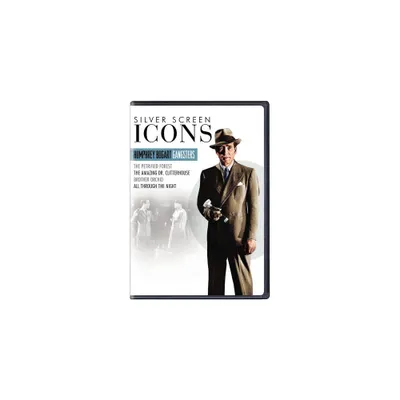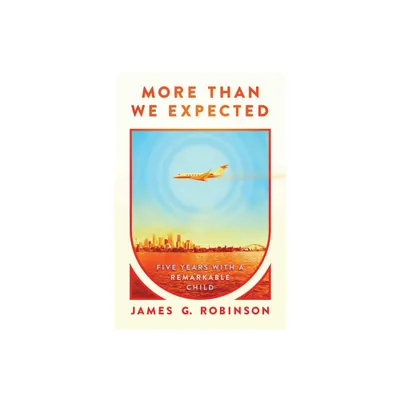Home
Hollywood's Gangster Icons: The Lives and Careers of Humphrey Bogart, James Cagney, and Edward G. Robinson
Loading Inventory...
Barnes and Noble
Hollywood's Gangster Icons: The Lives and Careers of Humphrey Bogart, James Cagney, and Edward G. Robinson
Current price: $7.24


Barnes and Noble
Hollywood's Gangster Icons: The Lives and Careers of Humphrey Bogart, James Cagney, and Edward G. Robinson
Current price: $7.24
Loading Inventory...
Size: OS
*Product Information may vary - to confirm product availability, pricing, and additional information please contact Barnes and Noble
*Includes pictures
*Includes the actors' quotes about their lives and careers
*Includes bibliographies for further reading
Americans have always loved movie stars, and there have been no shortage of Hollywood icons, but one man has long been considered the greatest male star. From the time he first became a leading man, Humphrey Bogart's screen image has resonated with viewers more than perhaps any other actor. At the end of the 20th century, when the American Film Institute assembled its list of the 50 Greatest American Screen Legends, Bogart was at the top of the list. His persona as a tough guy who manages to maintain his sense of virtue no matter how compromising the situation features in some of the most famous films ever made, including Casablanca (1942), The Maltese Falcon (1941), and Key Largo (1949).
Ultimately, it was portraying tough guys and gangsters in the 1930s that turned Cagney into a massive Hollywood star, and they were the kind of roles he was literally born to play after growing up rough in Manhattan at the turn of the 20th century. In movies like The Public Enemy (which included the infamous "grapefruit scene") and White Heat, Cagney convincingly and grippingly played criminals that brought Warner to the forefront of Hollywood and the gangster genre. Cagney also helped pave the way for younger actors in the genre, like Humphrey Bogart, and he was so good that he found himself in danger of being typecast.
While Cagney is no longer remembered as fondly or as well as Bogart, he was also crucial in helping establish the system in which actors worked as independent workers free from the constraints of studios. Refusing to be pushed around, Cagney was constantly involved in contract squabbles with Warner, and he often came out on top, bucking the conventional system that saw studios treat their stars as indentured servants who had to make several films a year.
For most enthusiasts of film history, Edward G. Robinson's name is virtually synonymous with the Depression-era gangster films of the 1930s. After all, Robinson starred in Little Caesar (1931), which was one of the first major gangster films and is perhaps the most representative example of the genre. Little Caesar remains his most iconic gangster role, but he acted in several other notable gangster films over the course of the decade, including The Little Giant (1933) and A Slight Case of Murder (1938). Even during the 1940s, after the gangster genre had ceded much of its standing to the postwar film noir genre, Robinson retained his ties to gangster films, memorably playing gangster Johnny Rocco in Key Largo (1948). With his short, round physique and irascible screen persona, Robinson became a kind of cinematic brother to James Cagney, and the two remain the most famous of the Hollywood gangster stars.
Hollywood's Gangster Icons analyzes the lives and careers of the three stars. Along with pictures and bibliographies, you will learn about Bogart, Cagney, and Robinson like never before.
*Includes the actors' quotes about their lives and careers
*Includes bibliographies for further reading
Americans have always loved movie stars, and there have been no shortage of Hollywood icons, but one man has long been considered the greatest male star. From the time he first became a leading man, Humphrey Bogart's screen image has resonated with viewers more than perhaps any other actor. At the end of the 20th century, when the American Film Institute assembled its list of the 50 Greatest American Screen Legends, Bogart was at the top of the list. His persona as a tough guy who manages to maintain his sense of virtue no matter how compromising the situation features in some of the most famous films ever made, including Casablanca (1942), The Maltese Falcon (1941), and Key Largo (1949).
Ultimately, it was portraying tough guys and gangsters in the 1930s that turned Cagney into a massive Hollywood star, and they were the kind of roles he was literally born to play after growing up rough in Manhattan at the turn of the 20th century. In movies like The Public Enemy (which included the infamous "grapefruit scene") and White Heat, Cagney convincingly and grippingly played criminals that brought Warner to the forefront of Hollywood and the gangster genre. Cagney also helped pave the way for younger actors in the genre, like Humphrey Bogart, and he was so good that he found himself in danger of being typecast.
While Cagney is no longer remembered as fondly or as well as Bogart, he was also crucial in helping establish the system in which actors worked as independent workers free from the constraints of studios. Refusing to be pushed around, Cagney was constantly involved in contract squabbles with Warner, and he often came out on top, bucking the conventional system that saw studios treat their stars as indentured servants who had to make several films a year.
For most enthusiasts of film history, Edward G. Robinson's name is virtually synonymous with the Depression-era gangster films of the 1930s. After all, Robinson starred in Little Caesar (1931), which was one of the first major gangster films and is perhaps the most representative example of the genre. Little Caesar remains his most iconic gangster role, but he acted in several other notable gangster films over the course of the decade, including The Little Giant (1933) and A Slight Case of Murder (1938). Even during the 1940s, after the gangster genre had ceded much of its standing to the postwar film noir genre, Robinson retained his ties to gangster films, memorably playing gangster Johnny Rocco in Key Largo (1948). With his short, round physique and irascible screen persona, Robinson became a kind of cinematic brother to James Cagney, and the two remain the most famous of the Hollywood gangster stars.
Hollywood's Gangster Icons analyzes the lives and careers of the three stars. Along with pictures and bibliographies, you will learn about Bogart, Cagney, and Robinson like never before.


![Edward G. Robinson Double Feature: Scarlet Street/The Stranger [Blu-ray]](https://prodimage.images-bn.com/pimages/0793945971237_p0_v1_s600x595.jpg)








